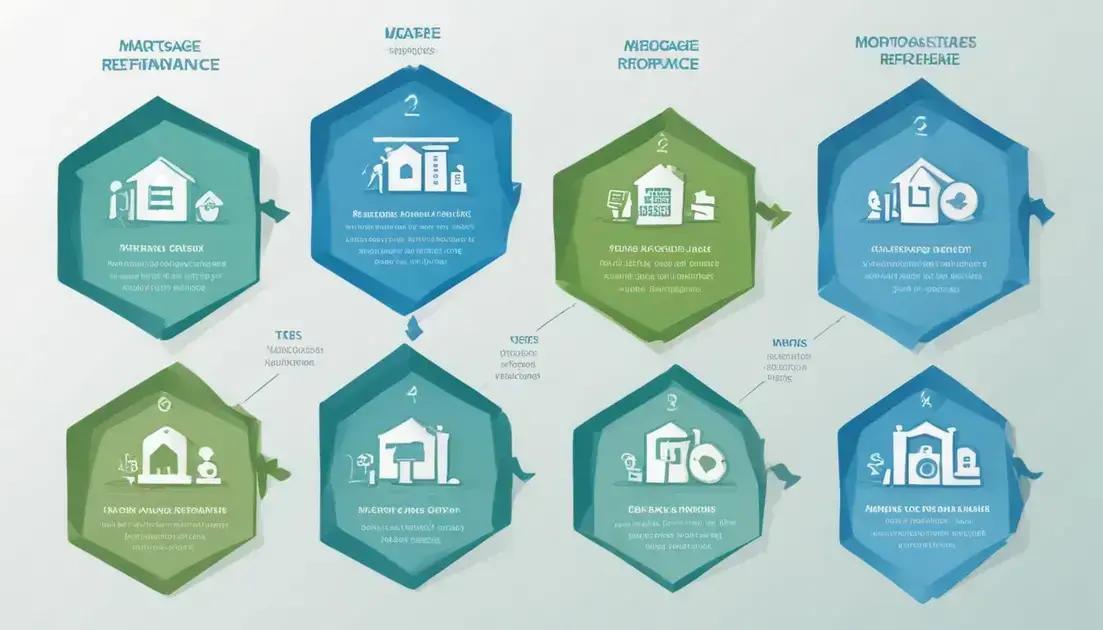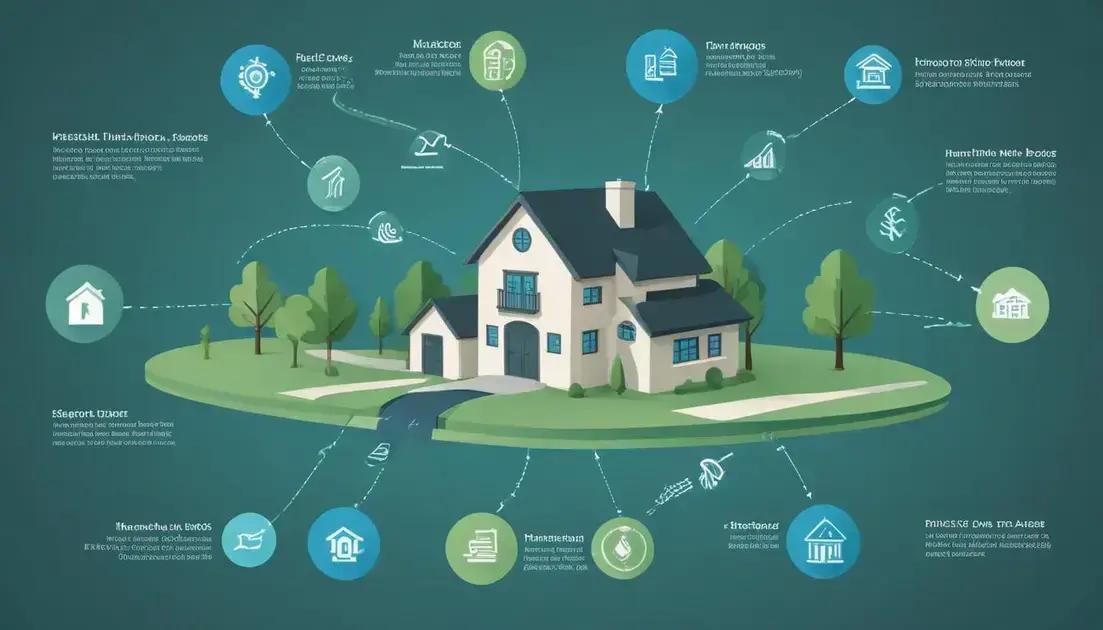Mortgage loan refinance: how to save thousands and lower your monthly payments

Thinking about a mortgage loan refinance? You’re not alone. Millions of homeowners refinance each year to lower their payments, reduce interest rates, or tap into home equity. But is it the right move for you? Let’s break it down.
What is mortgage loan refinance and how does it work?
A mortgage loan refinance is when you replace your current home loan with a new one, often with better terms. This can mean a lower interest rate, a shorter loan term, or even cashing out some of your home’s equity. The process is similar to getting your original mortgage but with a few key differences.
How does refinancing work?
When you refinance, a lender pays off your old mortgage and issues you a new one. You’ll need to qualify again, which means they’ll check your credit, income, and home value. If approved, you’ll start making payments on the new loan instead of the old one.
Why do people refinance?
Most homeowners refinance to save money through lower monthly payments or reduced interest over time. Others do it to switch from an adjustable-rate mortgage (ARM) to a fixed-rate loan for more stability. Some use cash-out refinancing to access their home’s equity for major expenses.
The refinancing process typically takes 30-45 days and involves paperwork, an appraisal, and closing costs. While it can save you thousands over time, it’s important to calculate whether the savings outweigh the fees involved.
Key benefits of refinancing your mortgage
Refinancing your mortgage can offer several key financial benefits that make it worth considering. The most common advantage is lower monthly payments, which happens when you secure a lower interest rate than your current loan. Even a small rate reduction can save you thousands over the life of your loan.
Reducing your interest costs
By refinancing to a lower rate, you’ll pay less interest over time. For example, dropping from 5% to 4% on a $300,000 loan could save about $175 per month – that’s $63,000 over 30 years! This money could go toward savings, investments, or other financial goals.
Changing your loan term
Refinancing lets you adjust your repayment timeline. You might switch from a 30-year to a 15-year mortgage to pay off your home faster, or extend your term to lower monthly payments if money is tight. Each option has different impacts on your overall costs.
Another major benefit is accessing home equity through cash-out refinancing. This lets you convert home value into cash for renovations, debt consolidation, or other needs while often keeping better terms than personal loans or credit cards.
When is the right time to refinance your mortgage?
Knowing when to refinance your mortgage can make all the difference in maximizing your savings. The ideal timing depends on several key factors, starting with current interest rate trends. A good rule of thumb is to consider refinancing when rates are at least 0.5% to 1% lower than your current rate.
Evaluating your financial situation
Your personal finances play a crucial role in determining the right time. If your credit score has improved significantly since you got your original mortgage, you might qualify for much better rates now. Similarly, if you’ve built substantial equity in your home (typically at least 20%), you’ll have more refinancing options available.
Considering your future plans
Think about how long you plan to stay in your home. The break-even point (when savings outweigh closing costs) typically takes 2-3 years. If you might move sooner, refinancing might not make financial sense. Also consider life changes like job stability or upcoming major expenses that could affect your ability to make payments.
Market conditions and loan types matter too. ARM holders might want to refinance to fixed rates before adjustable periods begin, while those nearing retirement might benefit from shortening their loan term. Always run the numbers carefully before deciding.
How to qualify for a mortgage refinance
Qualifying for a mortgage refinance requires meeting several key lender requirements. Your credit score is one of the most important factors – most lenders look for a minimum score of 620, though you’ll get better rates with 740 or higher. Check your credit report for errors before applying.
Income and employment verification
Lenders will verify your employment history and income stability. Typically, you’ll need at least two years of consistent employment in the same field. They’ll calculate your debt-to-income ratio (DTI), which should generally be below 43% including your new mortgage payment.
Home equity requirements
Most refinance programs require you to have at least 20% equity in your home. This means your loan balance should be no more than 80% of your home’s current value. If you have less equity, you might need to consider FHA streamline refinancing or other special programs.
Your current mortgage payment history matters too. Lenders typically want to see at least 12 months of on-time payments. If you’ve had late payments recently, you may need to wait before qualifying. Finally, the property itself must meet certain standards – it should be in good condition and properly insured.
Steps to apply for a mortgage refinance

Applying for a mortgage refinance involves several key steps that can help ensure a smooth process. First, check your credit score and review your credit reports for any errors. This gives you time to fix issues before lenders pull your credit.
Gather your financial documents
You’ll need to prepare recent pay stubs, W-2s or tax returns from the past two years, bank statements, and information about your current mortgage. Having these documents ready will speed up the application process significantly.
Shop around for lenders
Compare offers from at least 3-4 different lenders, including banks, credit unions, and online lenders. Look at both the interest rates and the closing costs, as these can vary widely. Getting pre-approved will give you a better idea of what terms you qualify for.
Once you choose a lender, you’ll complete a full application and the lender will order an appraisal of your home. Be prepared to answer questions about your employment, assets, and debts. After underwriting approval, you’ll receive a Closing Disclosure outlining final terms, followed by the actual closing where you’ll sign the new loan documents.
Comparing fixed-rate vs. adjustable-rate refinance options
When refinancing your mortgage, one of the most important decisions is choosing between a fixed-rate and adjustable-rate mortgage (ARM). Fixed-rate mortgages keep the same interest rate for the entire loan term, providing stability in your monthly payments. ARMs typically start with a lower introductory rate that adjusts periodically after an initial fixed period.
Pros and cons of fixed-rate refinancing
Fixed-rate loans are ideal if you plan to stay in your home long-term or prefer predictable payments. While rates are generally higher than initial ARM rates, you’re protected if market rates rise. However, you’ll need to refinance again if rates drop significantly.
Understanding adjustable-rate mortgages
ARMs can save you money if you plan to move or refinance before the rate adjusts. Common options include 5/1 or 7/1 ARMs (fixed for 5 or 7 years, then adjusting annually). Be aware of rate caps that limit how much your rate can increase, and consider worst-case scenarios when evaluating affordability.
Your choice depends on factors like how long you’ll keep the mortgage, your risk tolerance, and market conditions. Those nearing retirement may prefer fixed-rate stability, while younger homeowners might benefit from ARM savings if they expect to move within the fixed period.
Understanding closing costs and fees
Closing costs are an essential factor to consider when refinancing your mortgage, typically ranging from 2% to 5% of your loan amount. These fees cover various services required to process your refinance and transfer the property title. Understanding these costs helps you calculate your break-even point – when your monthly savings outweigh the refinance expenses.
Common refinance closing costs
You’ll encounter several standard fees including lender origination charges (0.5%-1% of loan amount), appraisal fees ($300-$700), title insurance ($700-$1,000), and escrow/tax service fees. Some lenders also charge discount points (1% of loan amount per point) to buy down your interest rate.
Ways to reduce closing costs
Consider a no-closing-cost refinance where the lender covers fees in exchange for a slightly higher rate. You can also shop around for third-party services like title insurance, or ask your current lender about streamline refinance options with reduced fees. Some costs like prepaid interest and property taxes aren’t truly fees but payments you’d make anyway.
Remember that while closing costs add to your upfront expenses, the long-term savings from a lower rate often justify these fees. Always review your Loan Estimate form carefully to understand each charge before proceeding with your refinance.
How refinancing affects your credit score
Refinancing your mortgage can have several impacts on your credit score, both positive and negative. When you apply for refinancing, lenders will perform a hard credit inquiry, which typically drops your score by 5-10 points temporarily. Multiple applications within a short shopping period (usually 14-45 days) generally count as a single inquiry.
Short-term vs. long-term effects
Initially, your score may dip due to the credit inquiry and new account opening. However, maintaining timely payments on your new loan can help rebuild your score over time. The age of your credit accounts will be affected since refinancing closes your old mortgage and opens a new one.
Credit utilization impact
If you’re doing a cash-out refinance that increases your debt, your credit utilization ratio may rise, potentially lowering your score. Conversely, refinancing to lower payments can improve your debt-to-income ratio, making you more creditworthy for future loans.
To minimize credit damage, avoid other new credit applications around refinancing time, keep all payments current, and maintain low balances on revolving credit. Most borrowers see their scores recover within 6-12 months, especially if they demonstrate responsible payment behavior with their new mortgage.
Common mistakes to avoid when refinancing
Refinancing your mortgage can save you thousands, but many homeowners make costly mistakes that erase potential benefits. One common error is focusing solely on the interest rate without considering closing costs and how long you plan to stay in the home. Always calculate your break-even point to ensure refinancing makes financial sense.
Overlooking the fine print
Many borrowers fail to read loan documents carefully, missing important details like prepayment penalties or balloon payments. Some don’t realize their new loan might have a longer term, meaning they’ll pay more interest over time despite a lower rate.
Timing mistakes
Refinancing too often can hurt your credit and waste money on repeated closing costs. Waiting too long when rates drop significantly means missing potential savings. Also problematic is refinancing right before a planned move, leaving little time to recoup costs.
Other common pitfalls include not shopping multiple lenders, neglecting to lock your rate, and cashing out too much equity unnecessarily. Avoid these mistakes by working with a trusted lender, reviewing all documents thoroughly, and having clear financial goals for your refinance.
Alternatives to refinancing your mortgage

If refinancing isn’t the right option for your situation, several alternative strategies might help you achieve similar financial goals. One popular approach is recasting your mortgage, where you make a lump sum payment and your lender recalculates your monthly payments based on the new balance, without changing your interest rate or loan term.
Home equity options
Consider a home equity line of credit (HELOC) or home equity loan if you primarily need access to cash. These typically have lower closing costs than refinancing and allow you to keep your existing mortgage intact. However, they usually have variable rates that can increase over time.
Loan modification programs
If you’re struggling with payments, your current lender might offer a loan modification that adjusts your interest rate or extends your term. Government programs like HARP (for Fannie Mae or Freddie Mac loans) or FHA streamline refinances can provide relief with less paperwork than traditional refinancing.
For those simply wanting to pay off their mortgage faster, making extra principal payments can reduce interest costs without refinancing. Before committing to any alternative, carefully compare costs, terms, and potential risks with your financial advisor or mortgage professional.
Making the Right Mortgage Refinance Decision
Refinancing your mortgage can be a powerful financial tool when used strategically. Whether you’re looking to lower monthly payments, reduce your interest rate, or access home equity, understanding all your options is key to making an informed decision.
Remember that refinancing isn’t always the best solution for every homeowner. Carefully consider your long-term plans, calculate the break-even point, and compare all alternatives before proceeding. The right choice depends on your unique financial situation and goals.
By avoiding common mistakes and working with reputable lenders, you can maximize the benefits of refinancing or find alternative solutions that better suit your needs. Your home is likely your most valuable asset – manage it wisely to build lasting financial security.






